[vc_row][vc_column][vc_column_text]
Senior Editor covering urban travel, tech & tourism development, Greg Oates at Skift recently published a “Manifesto for a New Generation of Meetings and Conventions.” Digital Edge is on the forefront of these issues, so we thought we would share with you how Digital Edge is rising to the occasion and meeting the demands of this ‘new generation’.
#1 Community / The Network Effect:
“The rise of public-private partnerships are helping stakeholders share data and resources to expand the destination’s inventory of potential convention participants, sponsors, exhibitors and experiences.” – Oates
Digital Edge works with the DMO and CVB’s partners and members to source and distribute content about the destination’s meetings and conventions spaces. By facilitating these partnerships, we gain more exposure for the DMO and provide more sharable and marketable content to the partners.
#2 Collaboration / The Value Proposition:
“The big shift here is about packaging and promoting destinations above and beyond their meetings infrastructure, and expanding on that to deliver local knowledge and creative industry expertise, academic research, and business sector intelligence to drive added value for everyone.” – Oates
Digital Edge immerses our content team within the destination to connect with both the public and private stakeholders in support of marketing the destination’s M&Cs. Our content program is entirely based on collecting the most relevant information, visuals, and resources for meeting planners within the destination and conveying this information online in an engaging and exciting new way.
We understand that there is a big difference between offering a search engine of individual websites for the meeting planner’s to sift through and try to piece together an ideal event in the meetings section of a DMO site and instead, offering relevant and personal articles and pages that do the leg work for the meeting planner. Designing smart industry-specific itineraries and offering a library of business intelligence from the area for meeting planners use during the planning process.
#3 Content / Digital Engagement:
The rise of mobile and digital brand storytelling is exploding today to help destinations, venues and planners more clearly define their value proposition and their events’ messaging on an ongoing basis for larger global audiences.
We tell stories about amazing places. At digital edge, this is our brand manifesto. We understand that meeting planners are people too and they care about the holistic experience of the destination for their attendees, rather than only the event itself. With this in mind, our campaigns are all about telling the story of the destination from a group-minded or meetings perspective.
Read more of this Awesome Manifesto below:
The Manifesto for a New Generation of Meetings and Conventions
Greg Oates, Skift – May 10, 2016 7:30 am
Every sector in the tourism industry has an updated strategic road map for the future aligned with modern day travel, digital, and business trends. Except the meetings and conventions sector.
Hospitality, for example, has clearly shifted toward delivering on the demand for local, lifestyle, and design-driven travel. Tour operators and travel agents have reworked their business models to better customize services to the individual traveler seeking authentic culture. The cruise industry continues its push in the direction of higher luxury and experiential travel. Unsexy as it is, corporate travel and the online booking platforms continually refine their product and service offerings in terms of ease of use. Even aviation, the most commoditized of the bunch, has vastly improved efficiencies.
More recently, destination marketing organizations (DMOs) are rallying around the direction provided by Destination Marketing Association International’s (DMAI).
DestinationNEXT research, launched in full in 2015, to increase their relevance and impact.But there is really no big game plan in business events today from an industry-wide perspective.
Every year, the major meetings industry organizations and other events industry players publish their annual meetings trend lists, but those all have a micro, compartmentalized perspective. The future of business events is not about Airbnb, Millennials, event tech, social media, short booking windows, moveable seating, or gluten-free banquets — at least not in terms of an overarching strategic mission.
So what is the macro, long-term vision for conventions? And how can cities, industry stakeholders, and conference organizers work together to design and implement that? What might that look like in the form of a new meetings industry manifesto?
Based on trends emerging among the most innovative cities and next generation conferences worldwide, one potential framework revolves around: Community, Collaboration, and Content.
Thinking about the big picture, those three pillars can be integrated to provide meeting design solutions to deliver on the business goals of meeting owners, the professional goals of attendees, and the legacy impact for host destinations.
As individual themes, those three pillars are nothing new. But together, and in that order, they offer the foundation for a new strategic road map in the meetings industry that’s both relevant in today’s digital economy and scalable for all event budgets and sizes.
Expanded, that framework looks something like:
#1 Community / The Network Effect:
The rise of public-private partnerships are helping stakeholders share data and resources to expand the destination’s inventory of potential convention participants, sponsors, exhibitors and experiences.
#2 Collaboration / The Value Proposition:
The big shift here is about packaging and promoting destinations above and beyond their meetings infrastructure, and expanding on that to deliver local knowledge and creative industry expertise, academic research, and business sector intelligence to drive added value for everyone.
#3 Content / Digital Engagement:
The rise of mobile and digital brand storytelling is exploding today to help destinations, venues and planners more clearly define their value proposition and their events’ messaging on an ongoing basis for larger global audiences.
Skift has looked at all of those pieces numerous times on an individual basis over the past few years, some of which has been culled together below. The goal here is to bring all of that together for an executive summary that provides a unified and succinct vision for the future of large business events.
In one sentence:
The future of conferences is about expanding community networks to provide a more interdisciplinary field of thought leaders; activating that community to collaborate more strategically with meeting professionals; and building digital content platforms that leverage the collective knowledge of all communities associated with any given event.
Community: The Network Effect
“Network effect” relates to the exponential rise in the value of communities as their networks grow. When Alison Wynne Best took over as CEO of Visit Oakland in 2012, she said, “Tourism had never been valued in Oakland, and we’re a good size destination. The city didn’t understand it. The chamber didn’t understand it. The teams didn’t understand it. The airport probably understood it but they weren’t working with the DMO.”
To change that, Best started meeting with every stakeholder in the city to explain her mission to align the city in a common purpose to drive visitation to Oakland, with a significant portion of that including conference business.
“You always hear how you should be at the table,” she said. “We really feel in Oakland that we sort of had to build the table, and then we’ve actually invited people to our table, which has caused a stir for some people who’ve been doing their jobs for 20 years…. It’s ruffled some feathers, but I think we’ve done it in a way that has gained a lot of credibility.”
That is an extreme example of a once broken DMO, but it shows the value of network building as the first step toward citywide business tourism development.
In 2014, hotel ADR (average daily rate) in Oakland jumped 11% over 2013, and hotel occupancy rose 4% to 79% overall. And in 2015, Visit Oakland, the city council, and the area hotels agreed on a new Tourism Business Improvement District (TBID) assessment fee resulting in $1.6 million in new funds to promote the city to visitors.
Likewise, the CEOs of both the Philadelphia CVB and Destination Cleveland emphasized to Skift recently that the success of their public-private partnerships and their commitment to engaging local citizens was among the deciding factors that helped win their respective political conventions.
In the private sector, Jake Orville, CEO of Cleveland HeartLab, explained the overall spirit of community building in the city that helps attract medical meetings. When doctors ask him for a behind-the-scenes tour of the Cleveland Clinic, for example, Orville told us, “I’ll say, ‘Sure, of course.’ There are things that doctors want that they never ask for. I mean, if you go to Boston, who would you even ask for a behind-the-scenes tour of Harvard Partners? Here it’s just easy, and I can give you a hundred different analogies like that.”
In Canada, Tourism Vancouver is building niche citywide networks with area restaurants by developing a structured sustainable food and beverage program, which it can then deliver in a turnkey package to planners for dine-arounds.
“It’s really an element of a much larger sort of package for the city,” said Gwendal Castellan, tourism energy specialist for Tourism Vancouver. “Just by itself, it’s not a driver. It may not bring you to the city but it’s certainly going to contribute to your experience while you’re here, and your desire to come back.”
This commitment to expanding networks isn’t just happening in first-tier destinations. Brenda Myers, president and CEO of Hamilton County Tourism, described to Skift how her DMO and Hamilton County Economic Development share the same office and different resources. The two departments work together to collect and disseminate data on all of the stakeholder businesses affiliated with industry sectors that meet in the destination.
“We need to be more than marketing,” said Myers. “We need to be a business intelligence center, so that’s why we decided to work very, very closely together. We are awash in data, and we need some way to take that information and make it relevant and meaningful for people in our target markets.”
So what is the value of that for interested conference organizers?
“Now we’re much more attractive to meeting planners because we have a better understanding of our business climate, so it’s not just about the hotel rooms anymore,” Myers explained. “It’s about the content that we can connect them with. It’s all about content. It’s all about context, and we’re getting better and better at that. That is very much the new marketplace.”
Collaboration: The Value Proposition
Read More Here…[/vc_column_text][/vc_column][/vc_row]


